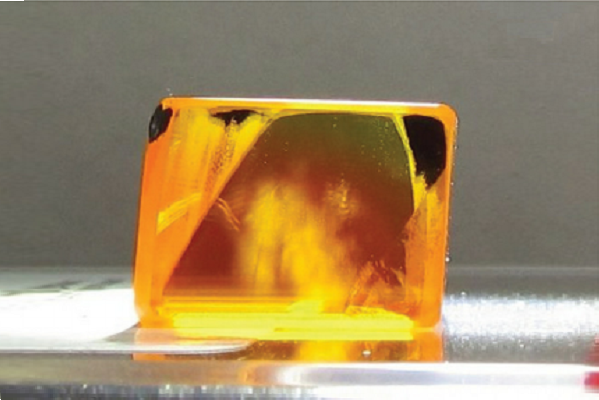Nonlinear Crystals: HGS
Nonlinear Crystals: HGS
Description

HGS (mercury thiogallate) is a nonlinear crystal that is used for frequency conversion in laser technology. HGS has a relatively high nonlinear coefficient and a wide transparency range, making it suitable for second harmonic generation (SHG), sum frequency generation (SFG), and difference frequency generation (DFG).
In SHG, the frequency of a laser beam is doubled by passing it through an HGS crystal. This process is used to generate light in the ultraviolet range, which is useful in applications such as fluorescence microscopy and laser spectroscopy.
SFG involves combining two laser beams of different wavelengths to create a new beam with a frequency equal to the sum of the input frequencies. HGS is often used as the nonlinear crystal in SFG because of its high efficiency and low absorption. SFG is used in a range of applications, including in Raman spectroscopy and in the production of visible and ultraviolet light.
DFG produces a new frequency that is equal to the difference between two input frequencies. HGS can be used in DFG to generate tunable mid-infrared radiation, which has applications in spectroscopy, sensing, and imaging.
HGS has a relatively high damage threshold, which makes it suitable for high-power laser applications. It also has a wide transparency range, which makes it useful for a range of wavelengths. Additionally, HGS has a low temperature coefficient of the refractive index, which means its optical properties are less sensitive to temperature changes.
However, HGS is a relatively soft material, which can make it difficult to polish and maintain its optical quality. Additionally, HGS is a hygroscopic material, which means it can absorb moisture from the air and require careful handling and storage to maintain its performance.
| Transparency range, µm | 0.55 - 13.00 |
| Negative uniaxial crystal | no > ne |
| Point group | 4 |
| Mohs hardness | 3 - 3.5 |
| Density, g/cm3 | 4.95 |
| Energy gap, eV | 2.34 |
| Dispersion of refractive indices (Experimental values): | |
| at 0.5495 µm | no = 2.6592; ne = 2.5979 |
| at 0.6500 µm | no = 2.5796; ne = 2.5264 |
| at 1.0760 µm | no = 2.4774; ne = 2.4324 |
| at 3.5400 µm | no = 2.4386; ne = 2.3979 |
| at 11.000 µm | no = 2.3690; ne = 2.3290 |
| Non-linear coefficients | d36 (1.064 mm) = 1.8 d36 ( AgGaS2 ) ± 15% = (35.2 ± 5.3 ) pm/V |
| d31 (1.064 mm) = 0.6 d36 ( AgGaS2 ) ± 15% = (11.7 ± 1.8 ) pm/V | |
| Optical damage threshold, MW/cm2 | 60 - 90 at surface (1064nm, 10 ns) |
Order Form
About Semiconductor Electronics
SEMI EL project is a global supplier of materials, equipment, spare parts and supplies for the semiconductor industry.
Get In Touch
Email: info@semi-el.com

